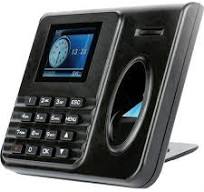In today’s digital age, Closed Circuit Television (CCTV) systems have become an essential tool for enhancing security and surveillance in various settings. While many CCTV systems rely on WiFi connectivity for data transmission and remote monitoring, there are still viable options available for CCTV systems that operate without WiFi.
Non-WiFi CCTV systems offer a reliable alternative for locations where WiFi connectivity may be unreliable or unavailable. These systems typically use traditional wired connections, such as coaxial cables or Ethernet cables, to transmit video footage from the cameras to the recording device or monitoring station.
One of the key advantages of CCTV systems without WiFi is their stability and security. Since these systems do not rely on wireless signals, they are less susceptible to interference or hacking attempts, making them a preferred choice for high-security environments.
Moreover, non-WiFi CCTV systems are often easier to set up and maintain compared to their wireless counterparts. With simple plug-and-play installation processes, users can quickly deploy these systems without the need for complex network configurations or troubleshooting wireless connectivity issues.
Additionally, non-WiFi CCTV systems can provide continuous surveillance coverage without being affected by signal disruptions or bandwidth limitations that may occur with WiFi-based systems. This ensures uninterrupted monitoring and recording of video footage, crucial for security applications where reliability is paramount.
Overall, while WiFi-enabled CCTV systems offer convenience and flexibility in terms of remote access and scalability, non-WiFi CCTV systems remain a robust choice for environments that prioritize stability, security, and ease of installation. By leveraging traditional wired connections, these systems provide a dependable solution for effective surveillance operations in various settings.
7 Essential Tips for Optimizing Your Non-WiFi CCTV System
- Ensure proper placement of the CCTV cameras for maximum coverage
- Use high-resolution cameras to capture clear images and videos
- Install a DVR system to store footage for later viewing
- Regularly check and maintain the CCTV cameras for optimal performance
- Consider using infrared cameras for night vision capability
- Securely mount the CCTV cameras to prevent tampering or theft
- Label and organize camera cables for easy maintenance and troubleshooting
Ensure proper placement of the CCTV cameras for maximum coverage
When setting up a CCTV system without WiFi, it is crucial to ensure proper placement of the cameras to achieve maximum coverage and effectiveness. Strategic positioning of the cameras in key areas can help eliminate blind spots and provide comprehensive surveillance of the monitored area. By carefully selecting locations that offer optimal vantage points and coverage angles, you can enhance the overall security capabilities of your CCTV system and improve the monitoring capabilities without relying on wireless connectivity.
Use high-resolution cameras to capture clear images and videos
When setting up a CCTV system without WiFi, it is crucial to use high-resolution cameras to ensure clear and detailed images and videos. High-resolution cameras offer superior image quality, enabling better identification of individuals, objects, or events captured by the surveillance system. By investing in high-resolution cameras, you can enhance the effectiveness of your CCTV system and improve overall security monitoring capabilities, even without relying on WiFi connectivity for data transmission.
Install a DVR system to store footage for later viewing
To ensure effective monitoring and security surveillance with CCTV systems that do not rely on WiFi connectivity, it is advisable to install a Digital Video Recorder (DVR) system. A DVR system serves as a central hub for storing recorded footage from the CCTV cameras, allowing users to review and playback video recordings at their convenience. By storing footage locally on the DVR, users can access historical data for investigative purposes or evidence collection, even in the absence of an internet connection. This feature enhances the overall functionality and reliability of non-WiFi CCTV systems, making them a practical choice for maintaining comprehensive security coverage in various environments.
Regularly check and maintain the CCTV cameras for optimal performance
Regularly checking and maintaining CCTV cameras is essential to ensure optimal performance and reliability. By conducting routine inspections, cleaning the lenses, adjusting the angles, and ensuring proper power supply, users can prevent potential issues such as blurred footage, distorted images, or camera malfunctions. Additionally, scheduling periodic maintenance tasks like software updates and system checks can help prolong the lifespan of CCTV cameras and maximize their effectiveness in monitoring and safeguarding the designated area.
Consider using infrared cameras for night vision capability
When setting up a CCTV system without WiFi, it is essential to consider incorporating infrared cameras to enhance night vision capability. Infrared cameras utilize infrared light to capture clear footage in low-light or completely dark environments, ensuring round-the-clock surveillance coverage. By integrating infrared technology into your CCTV setup, you can effectively monitor and record activities even in the absence of natural or artificial lighting, providing an added layer of security and visibility during nighttime hours.
Securely mount the CCTV cameras to prevent tampering or theft
To ensure the effectiveness of CCTV systems without WiFi, it is essential to securely mount the cameras to prevent tampering or theft. By installing the cameras at elevated positions out of reach and using tamper-resistant mounts, you can deter potential intruders from interfering with the surveillance equipment. Additionally, placing warning signs indicating video surveillance in operation can act as a further deterrent against tampering or theft. Properly securing the CCTV cameras not only safeguards the integrity of the system but also enhances overall security by maintaining uninterrupted surveillance coverage.
Label and organize camera cables for easy maintenance and troubleshooting
Effective cable management is crucial for maintaining a CCTV system without WiFi. By labeling and organizing camera cables, you can streamline maintenance and troubleshooting processes significantly. Clear labeling ensures that each cable is easily identifiable, making it simpler to trace connections and diagnose issues when troubleshooting is required. Organizing cables neatly not only improves the overall aesthetics of the setup but also minimizes the risk of accidental damage or disconnection during maintenance tasks. This simple yet essential tip can save time and effort in ensuring the smooth operation of your non-WiFi CCTV system.




